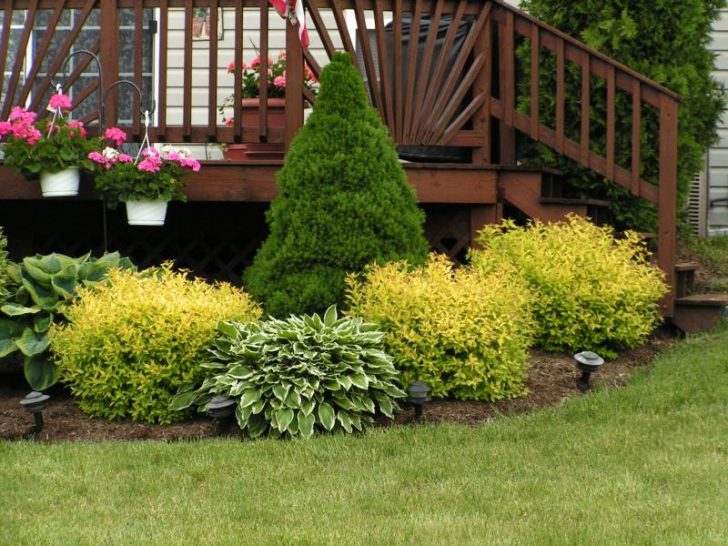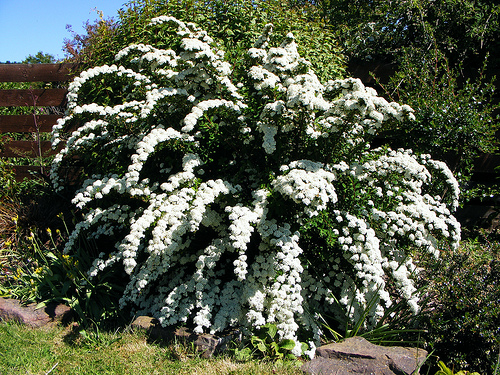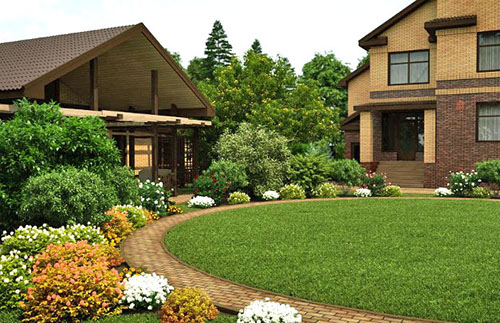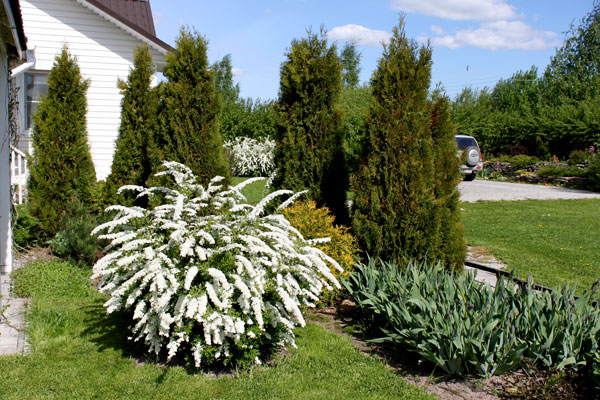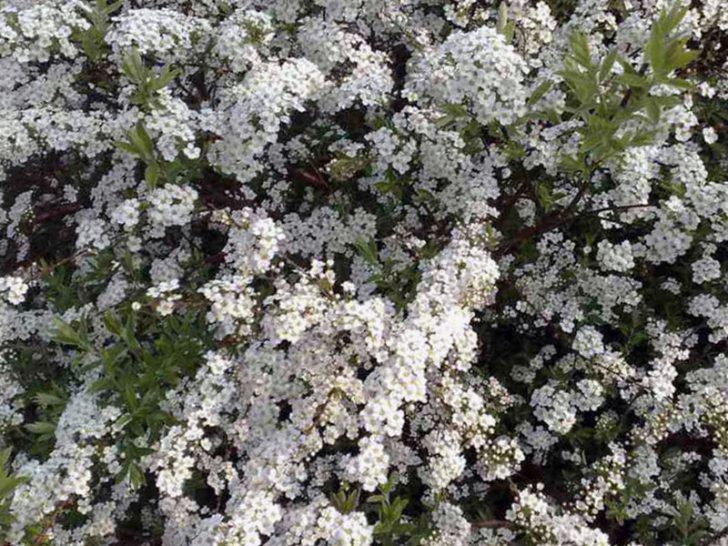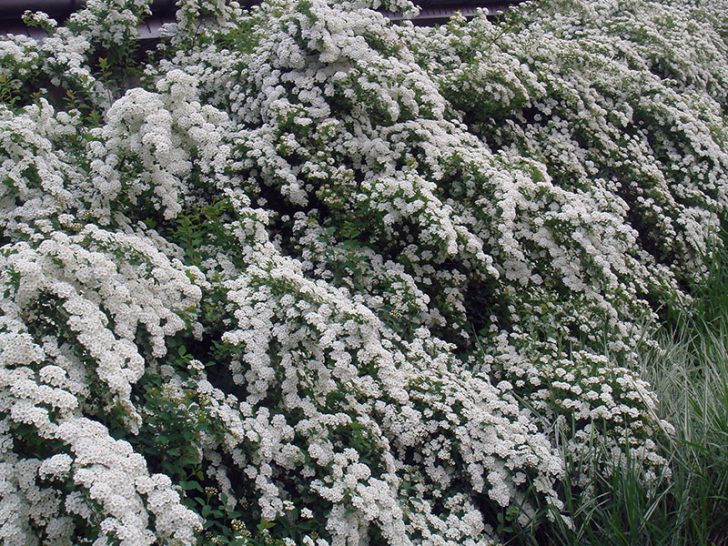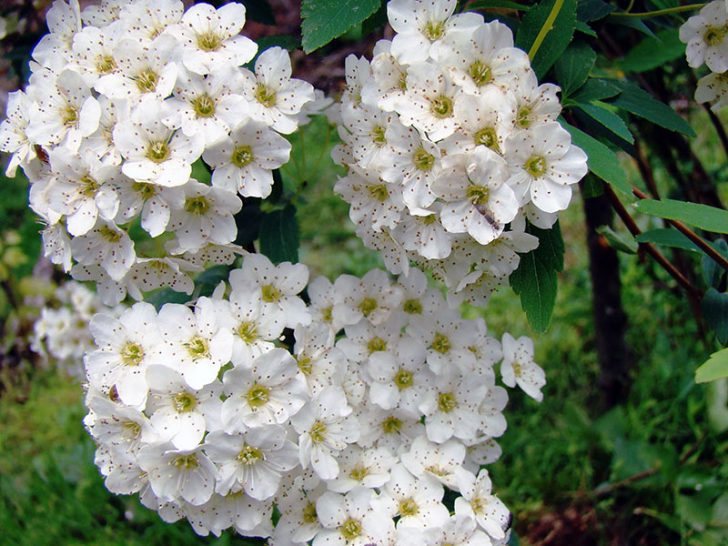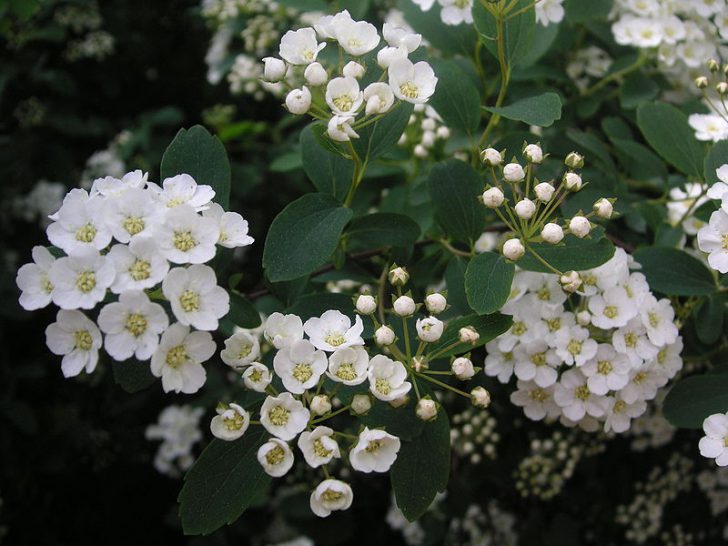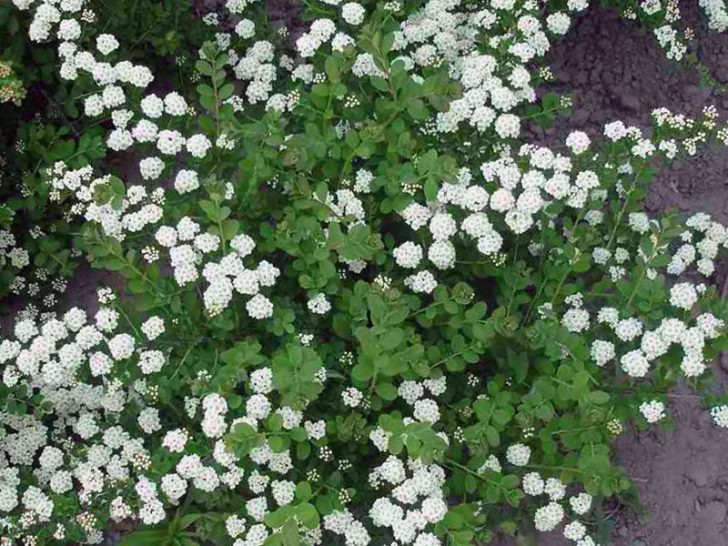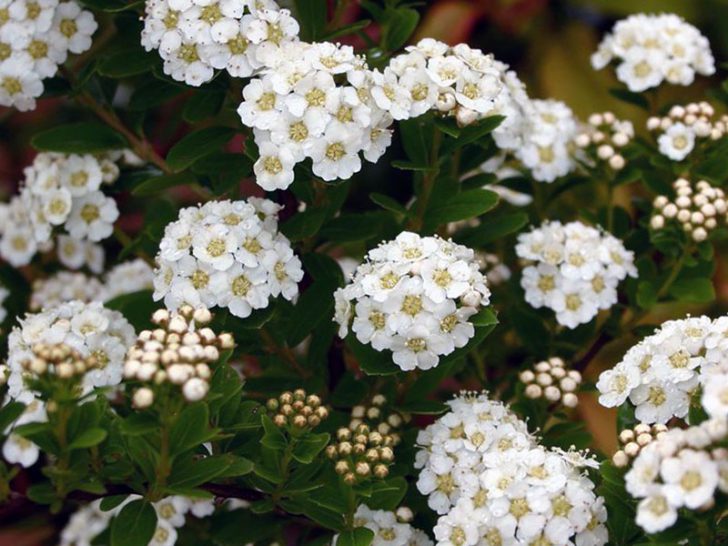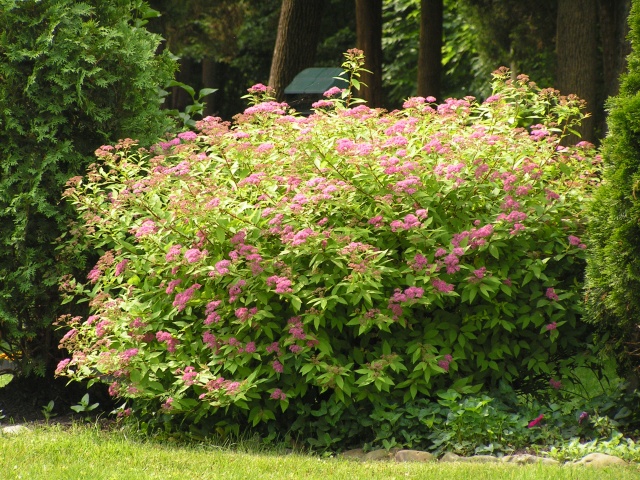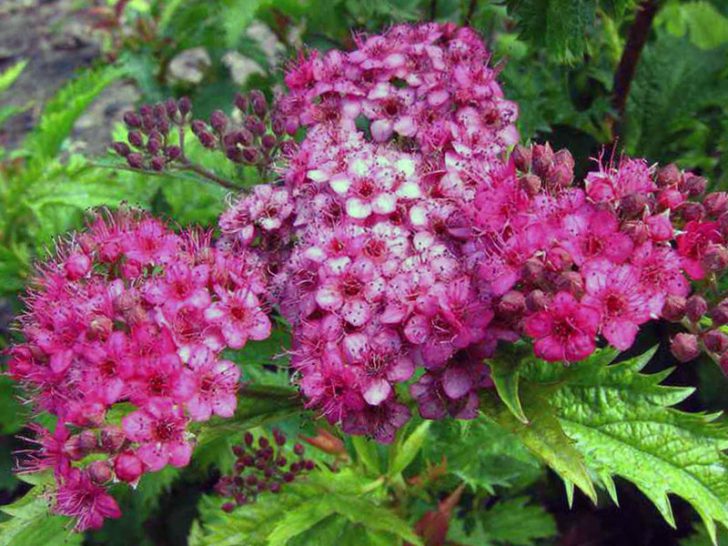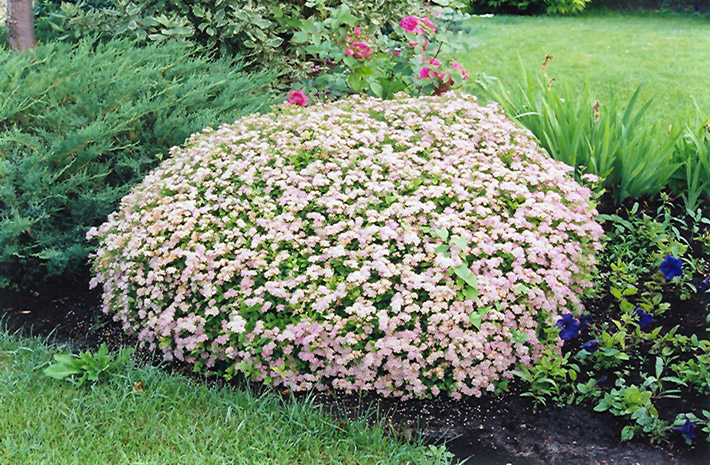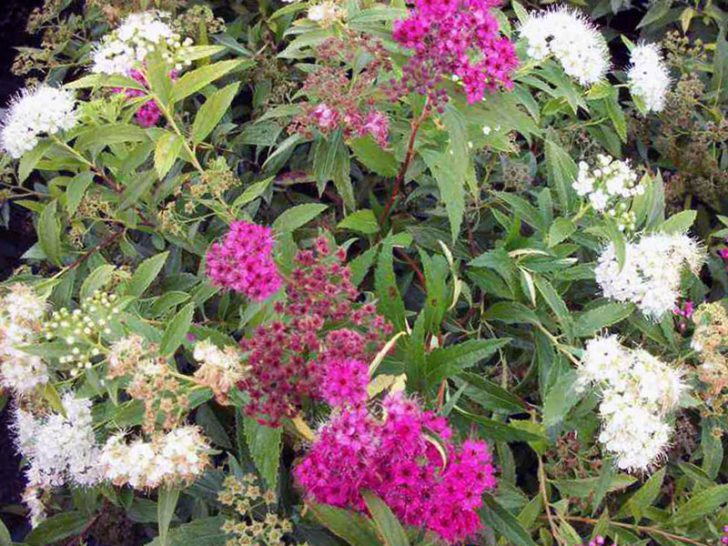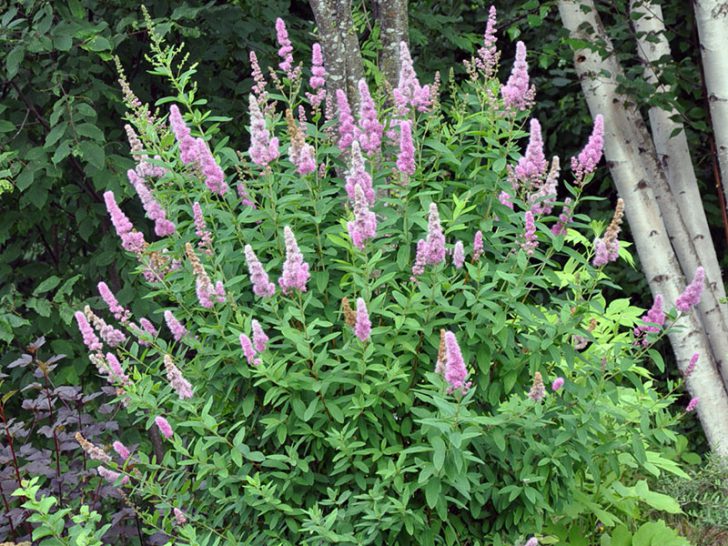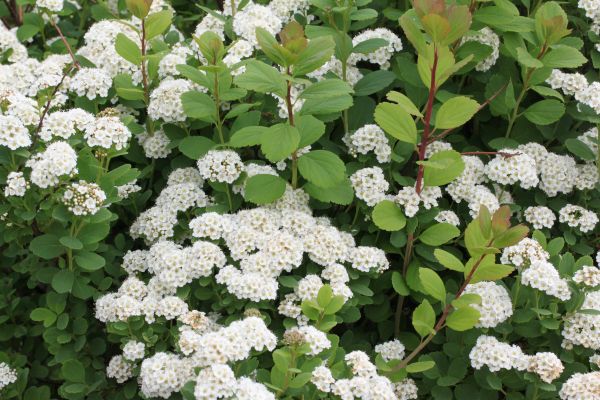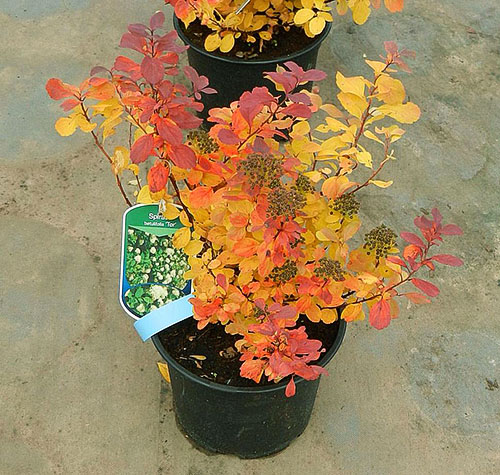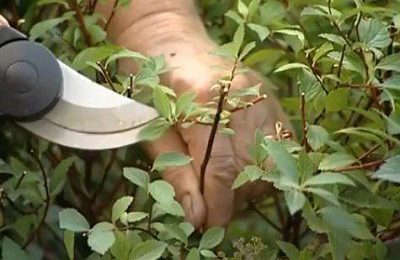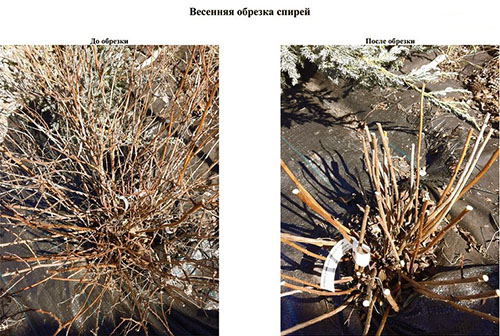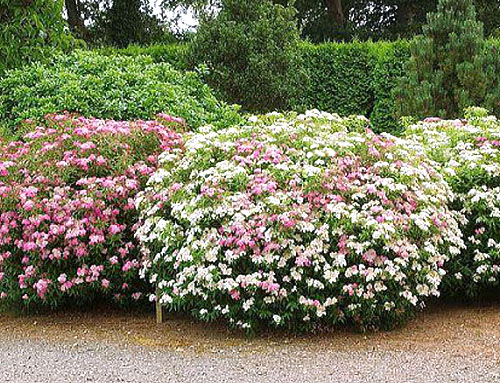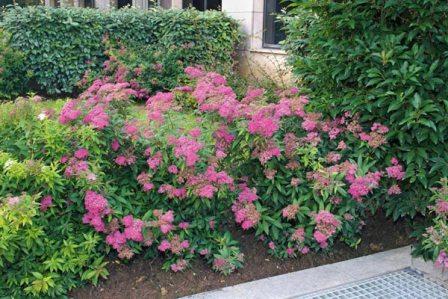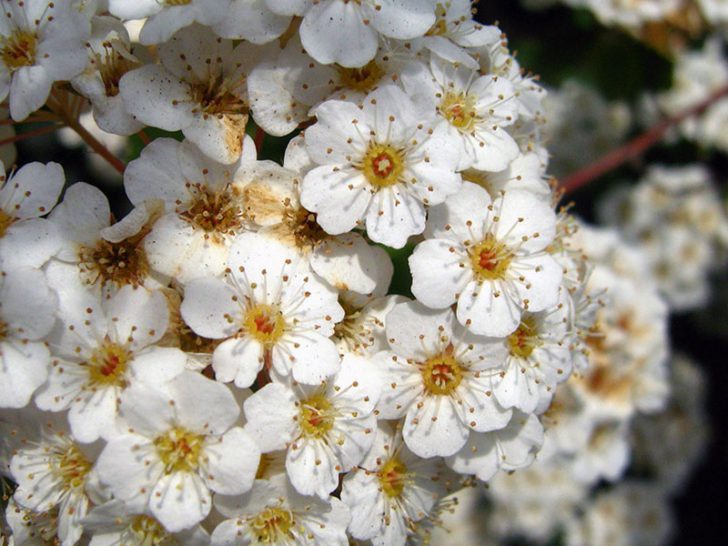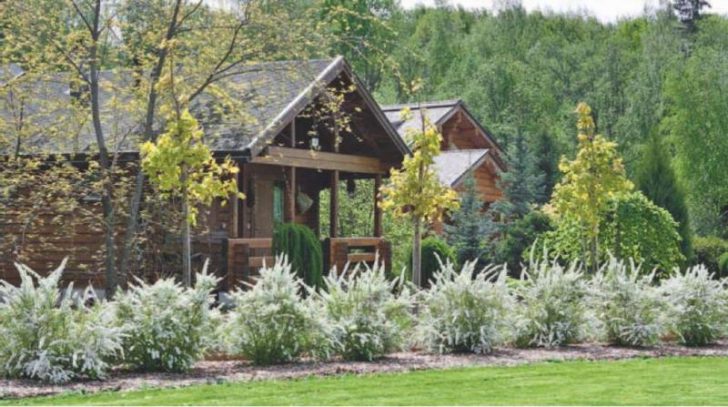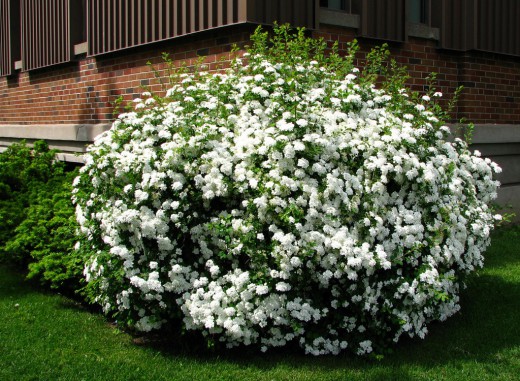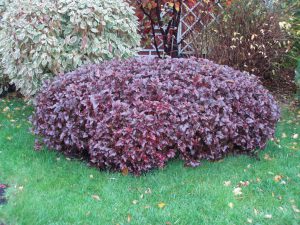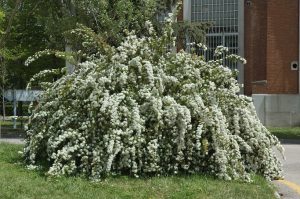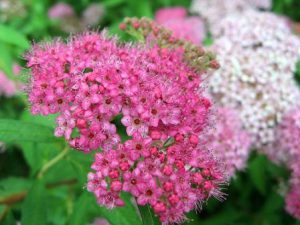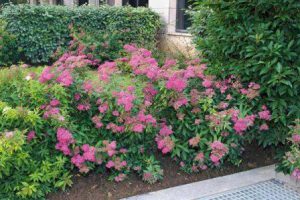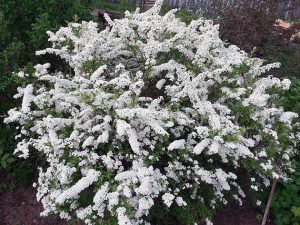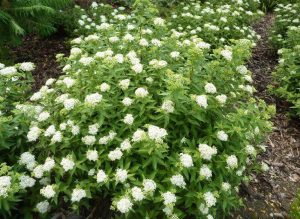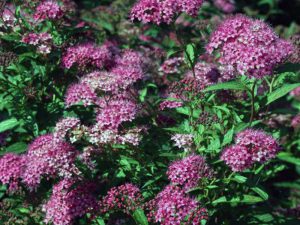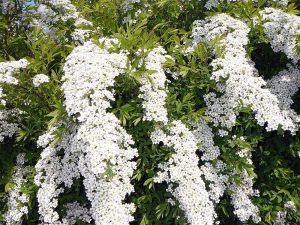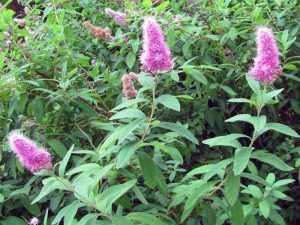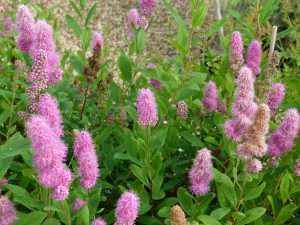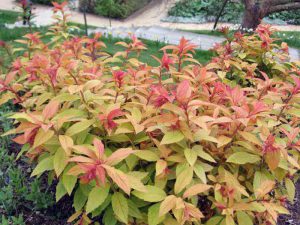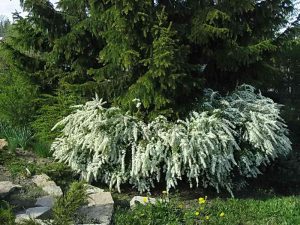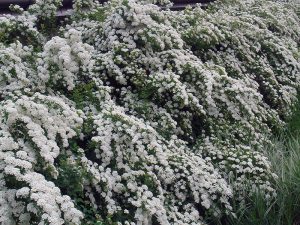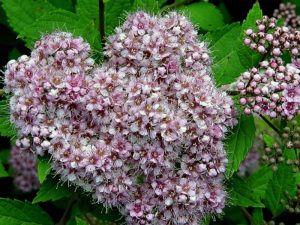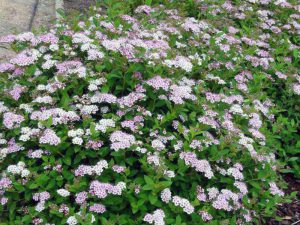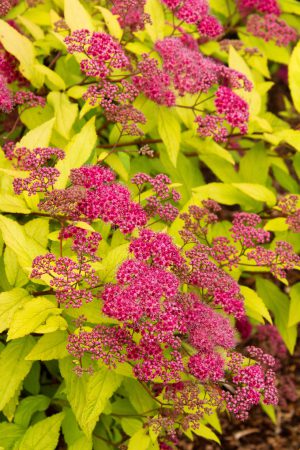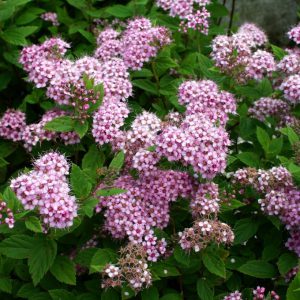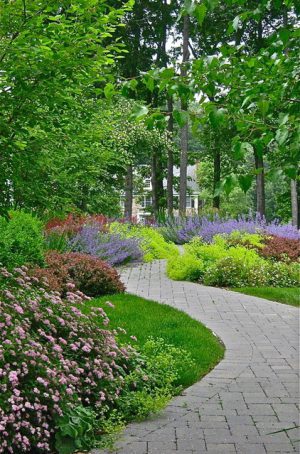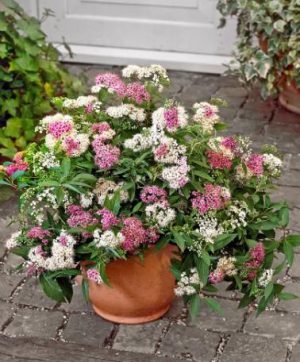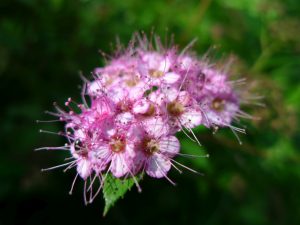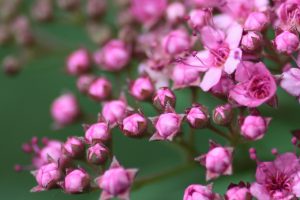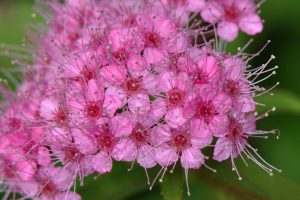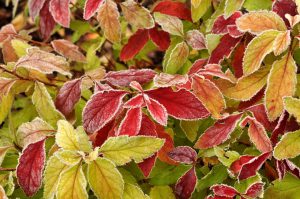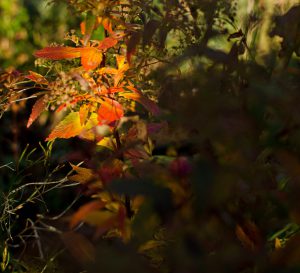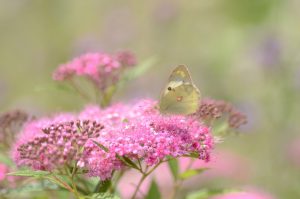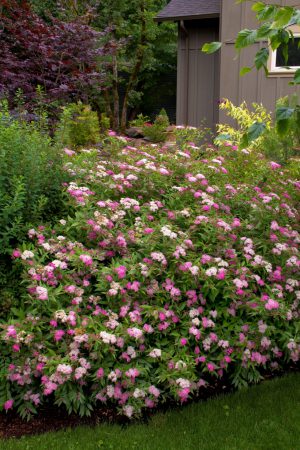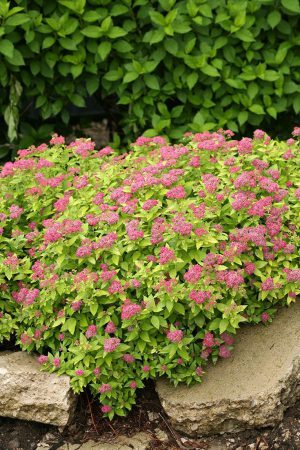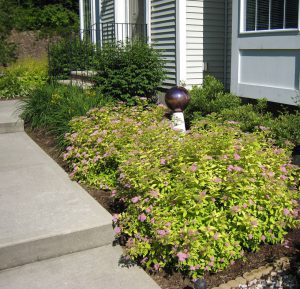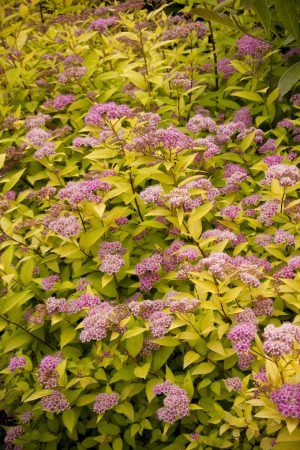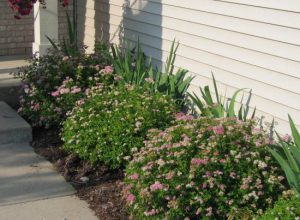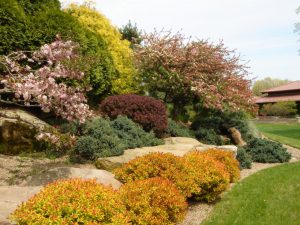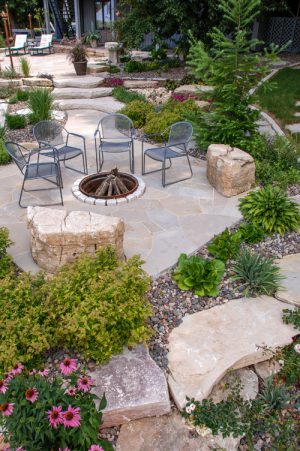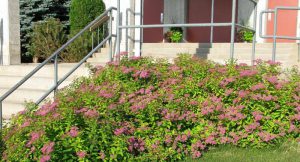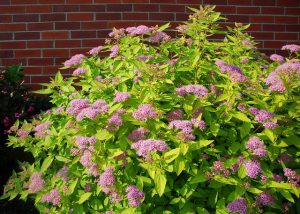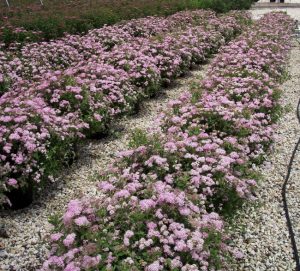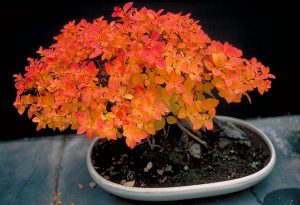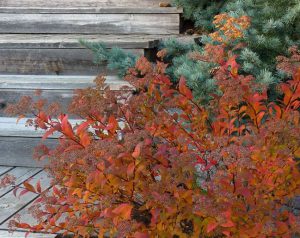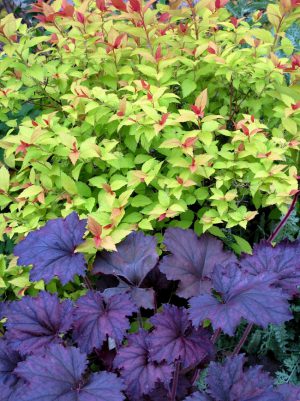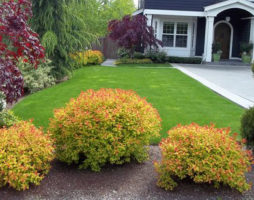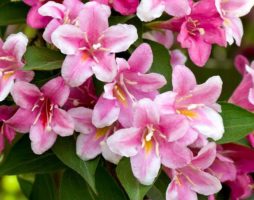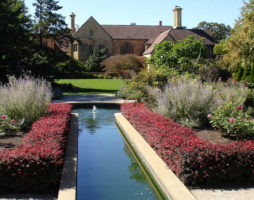The spirea shrub appears in the garden solely as a decorative element. In landscape design, it is used to create lush, but at the same time lacy lacy beauty hedges, group compositions, or use it as an independent unit of decoration. Such a breadth of use is really possible, because the varietal diversity of the plant is very large and is represented by almost a hundred varieties.
Some popular species benefit not only by the decorativeness of their appearance. In parallel, they are honey plants or serve as raw materials for the production of medicines. It is possible to use spirea in the garden and as a soil-fixing plant, but still the extraordinary beauty of the bushes comes first.
What is it, garden spirea?
In nature, spirea is a resident of desert and steppe zones. The height of shrubs is limited to two meters. According to the form of growth, they can be:
- Creeping.
- Hemispherical.
- Upright.
- Pyramidal, etc.
Designers conditionally share spireas also by flowering time. They were grouped as:
- Spring flowering.
- Summer flowering.
Spireas from the first subgroup almost all throw out white flowers, while representatives of summer species delight with a pink-red spectrum of flower petals.. All varieties used to improve the country landscape are perfectly adapted to wintering in our, not at all mild, conditions, and are also ready to grow in the polluted atmosphere of city gardens.
spring flowering category
Spirea gray
Two-meter, strongly branched, with ribbed felt shoots, a bush covered with gray-green foliage. It blooms with snow-white, collected in loose corymbs, inflorescences that cover the entire shoot. The flowering period is May-month. Since this type of spirea is a hybrid, it cannot be propagated by seeds. The high decorativeness of the bush allows it to be used in single and group plantings. Spirea gray flowers are used in the preparation of bouquets.
Spirea arguta
The spreading crown of a two-meter bush is formed by sharply serrated dark green leaves. The flowers are small, pure white. They are collected in umbrella-shaped inflorescences, densely dotting the shoots. Last year's shoots are flowering, so the bush is not pruned in spring.
Bushes of this variety grow slowly. For a year they are driven out by no more than 20 cm. In decorative terms, this is the most spectacular representative of spring-flowering spireas. The abundance of flowers and the elegance of the arched bend of the branches invariably attracts the eye, no matter how far away they look at the bush.
Spirea Vangutta
Giant, by spireian standards, a bush. The height and girth of the crown can be up to two meters.Differs in sprawling downward curving branches, forming, in turn, a beautiful cascading crown. The leaves are small, with a serrated border and bilateral coloring. Their upper surface is traditionally green, and the lower one is dull bluish, without edging.
Flowers, in this type of spirea, form hemispherical inflorescences and are white in color. The flowering period may be duplicated at the end of August, but the process will not be as active. Primrose spirea Vangutta becomes 3 years old.
The plant is shade-tolerant, actively growing, unpretentious, but needs well-drained soils. Easily propagated by cuttings.
This spirea is luxurious in single plantings. Can be used in groups and undersized hedges. With the participation of Vangutta spirea, large flower beds are created. The shrub is appropriate in the composition of coniferous compositions, good in the decoration of the shores of garden ponds.
Spiraea hornate
Representative of the species of undersized. The height of the bushes up to 1 meter. The crown is loose. The leaves are grayish-green, oblong. Leaves are the main identifying landmark of the variety. Bright varietal characteristics include the crenate edge of the leaves and the presence of three protruding veins on their lower surface.
The flowers are yellowish in color. The corymbose inflorescences delight with their beauty for about three weeks, after which fruits appear in their place.
The variety is drought-resistant, ready to grow in partial shade, but still has the greatest aesthetics when planted in well-lit places.
Spirea crenate is not often used in the decoration of gardens. Its "habitat" - city parks, forest parks, forest edges.
This variety is rich in hybrid forms.
Spirea oak-leaved
A two-meter upright shrub, the shoots of which, under the weight of inflorescences, are elegantly curved downwards. The crown is dense, rounded.
Thin-petiolate, medium-sized leaves are ovoid in shape. Their tips are pointed, and the edges are serrated. Leaves are two-colored. The underside has a bluish tint. The flowers are snow-white, small, united in hemispherical inflorescences. The flowering period is the beginning of May.
Oak-leaved spirea can take root in slightly shaded areas of the garden.
The species reproduces in all possible vegetative ways, so there are no problems with its breeding.
An excellent response to shearing makes this spirea variety in demand in hedges.
The plant is valued for the splendor of flowering and the elegance of the crown.
Spiraea nipponica
The shrub is distinguished by the proportionality of the spherical crown, which retains its green color even in late autumn and the bright color of the flowers. Yellowish-green inflorescences densely cover the shoots.
Spiraea nipponica is spectacular in itself, so it does not need companions.
The plant is photophilous, not demanding on the richness of the soil, easily propagated. It can be found in two varieties.
Summer flowering category
Japanese spirea
“In spring, oblong-ovate leaves bloom on the branches, green above and gray below. In autumn, the spirea crown will delight you with a spectacular variety of colors.
This is the most popular spirea variety, actively involved in the design of gardens and suburban areas. The main reason for such popularity is the ability of the plant to maintain its decorative appearance throughout the summer season and exceptional unpretentiousness. This type of spirea is loyal to nearby plants and does not adversely affect their formation.
The variety tolerates shearing well and is suitable for topiary sculptures. Japanese spirea is often used as a “padding” of a green hedge.To do this, it is planted between the rows of mock orange and lilac.
The appearance of the bush is luxurious. She is never naked. In winter, its shoots are covered with a felt edge. In spring, oblong-ovate leaves bloom on the branches, green above and gray below. In autumn, the spirea crown will delight you with a spectacular variety of colors. Pink-red flowers, characteristic of the Japanese variety, are grouped in corymbose-paniculate inflorescences.
This variety of spirea has a lot of garden forms, with a variety of flower colors, leaf blade size, and plant height. Preferred varieties are:
- "Little Princess". A low, 60 cm shrub with a round, compact crown, dark green leaves and elliptical, pink flowers. The variety is characterized by slow growth. It is used in the design of edges, group plantings, as a hedge.
- "Shirobana". Another representative of the Japanese spirea is compact in size. Its height is 0.8 m. A lush dark green crown is created by narrow-lanceolate small leaves. The color of flowers can vary from radiant white to pale pink. The species is used to decorate rock gardens, combinations with conifers, and the formation of borders.
- "Macrophylla". This is a representative of medium-sized subspecies of Japanese spirea. The bush kicks out with a height of 1.3 m. The leaves of the plant are large, swollen, wrinkled. When blooming, they amaze with their purple-red color, which over time changes to green, and then golden yellow.
Spirea Billard
This is a very successful hybrid of willow spirea and Douglas spirea. It grows as a spreading shrub of two meters in height. Leaves broadly lanceolate, up to 10 cm long. The lower part of the sheet is grayish-felt. The flowers are bright pink. They are formed into pyramidal inflorescences or hang down in narrow panicles.
The subspecies belongs to the category of shade-tolerant, which makes it especially in demand in the decoration of complex areas.
Billard's spirea bushes in the garden are used to create hedges, planted in landscape groups or solo.
Spirea birch leaf
The name spirea received for the striking similarity of the shape of the leaves with birch. The shrub itself is low, up to 60 cm. The crown is spherical, dense, with ribbed and even zigzag curved shoots. In autumn, the crown acquires a bright yellow hue. This species begins to bloom late, only for 4 years. The flowers are slightly pinkish, clustered in dense corymbose inflorescences, less often in convex panicles. Birch-leaved spirea is used to create edges and in landscaping rockeries.
back to index ↑Spirea planting technique
The spirea shrub is planted in the ground either in the spring immediately after the snow melts, or in late autumn, before the first frost. A planting hole for a seedling with proportions of 50x50cm must be prepared on a site with good lighting. It digs vertically, without narrowing down. The depth can vary from 40 to 50 cm. According to the standards, the volume of the planting hole should exceed the volume of the root system of the seedling by 30%. At the bottom, the soil should be loosened.
For heavy soils, drainage is mandatory. Its components can be broken brick and sand. The drainage mixture is poured onto the loosened bottom with a layer of 15 cm. The prepared landing site is left for airing for several days. The pit with the seedling will be filled not with the selected soil, but with a special soil mixture, which should include:
- 2 parts of sod or leaf land.
- 1 part peat.
- 1 part sand.
Before planting, the roots of the spirea bush must be rid of broken, thinned and too long shoots. Before lowering the seedling into the ground, its roots are dipped in a clay solution. After that, you can proceed to the direct landing process.
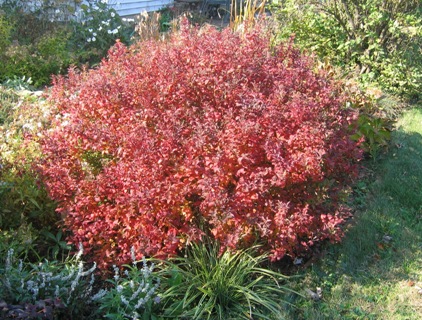
before planting spirea, you need to choose a place: so sun-loving varieties should not be planted in shaded areas
The plant placed in the pit is carefully sprinkled with the prepared soil mixture. As the earth is poured, the bush is gently shaken. After the final filling of the pit, the soil is carefully, without much zeal, compacted. The planting process ends with watering. One or two buckets of clean water are poured under the bush and the space adjacent to it is mulched with a seven-centimeter layer of peat.
If the planted spirea shrubs are to become a hedge, then the stepping distance for their planting should be 40 cm. At the same distance, the landing rows will also be defended if the zone of green fencing is planned to be multi-row.
back to index ↑Rules for the care of spirea shrubs in the garden
Watering
The main rule in watering spirea is not to flood it. Plants will be happy with a moderate amount of moisture. It will be quite enough for normal growth and adequate development of shrubs. Normative calculations of the required volume of water for each unit of spirea - 10 liters. Sometimes loosening the soil in the area around the bush and weeding will be required.
pruning
“The spirea shrub usually responds well to the pruning procedure, however, if a weak growth appears after it, then it is worth thinking about replacing the specimen”
Spirea shrubs growing in the garden are subject to pruning. It can be decorative and preventive. The type of pruning is selected in accordance with the varietal affiliation of the plant.
Early-flowering bushes are processed immediately after the end of the flowering period. In order to restore the decorativeness of the spirea, the shoots containing the inflorescences are shortened by exactly half. At the same time, weak shoots are cut off on the side branches, thickening the bush. You also need to remove old branches that are more than 7 years old.
Summer-flowering varieties go through the pruning stage only in early spring, when you need to clear them of frostbitten branches and renew the tops. The shoots thickening the shrub are also removed. Shortening is made to the first large kidneys. After the age of the bush exceeds 4 years, they can be cut more radically, leaving only thirty-centimeter shoots.
The spirea shrub usually responds well to the pruning procedure, however, if a weak shoot appears after it, then it is worth considering replacing the specimen, although the life of late-flowering varieties can be up to 20 years.
Fertilizer
Top dressing of spirea shrubs should be carried out in early spring. During this period, any suitable complex fertilizer is added to the soil at the rate of 100 g / m2 of the area adjacent to the plant. Re-feeding during the year is not provided.
reproduction
Varietal spireas can reproduce in any vegetative way:
- The division of the bushes.
- cuttings.
- Root growth.
- layering.
For division choose overgrown bushes. To do this, they are not taken out entirely from the ground, but simply separated from the edge of a small part. This method is convenient to breed those types of spirea that branch well:
- Ivolistnaya.
- Oak-leaved.
- Nipponskaya.
Layers for brood are taken in the spring, at a time when the first leaves appear on the branches of shrubs. First-year lateral shoots, bent to the ground, are dug in shallow grooves filled with loose fertile soil and pinned.While the engraftment process is taking place, the soil above the laid shoot is kept moist and the place is not overgrown with weeds. By autumn, several young shoots of new growth can sprout from one such buried branch at once.
You can also propagate spirea in the garden by cuttings. Material for this is taken in early June or July. It all depends on the type of shrub. Not suitable for breeding
- Tops.
- Zero escapes.
The length of the cutting is 7-10 cm. Both the upper and middle parts of the shoot are suitable. For speedy rooting, the ends of the cuttings are treated with a growth stimulator and placed in an impromptu hotbed. The planting soil is a mixture of high-moor peat and coarse river sand. Planting depth - 2 cm. To maintain high soil moisture, the stalk is hidden under a film or dome made of non-woven material.
Suitable for breeding spirea winter, lignified shoots. Cuttings from overwintered branches are cut in early spring and set to take root in a home window sill.
It is convenient to decorate the garden exclusively with spireas, collecting bushes in it with mismatched flowering periods. You can take a corner for different varieties representing one species, say, varieties of Japanese spirea. It will turn out both aesthetically and practically, because the shrubs will require identical care.
Where and what to plant
When planting spirea bushes in the garden, you need to think through both color combinations and the growth characteristics of the species used. This will allow you not to make mistakes in the calculations and not to land tall specimens in the foreground, and also not to leave the central parts of the landscape without an elegant floral decoration.
Options with luxurious arched shoots should be placed in open areas in separate plantings in order to open all their charms for viewing.
Spiraea shrubs from the genus sharp-toothed, crenate, Bumald, Billard look great in groups. You can put them on:
- Lilac.
- Japanese quince.
- Purple apple trees.
Spireas, in turn, with green foliage, focus on the beauty of flowering doronicums, daffodils, tulips, hydrangeas, perennial cornflowers.
Dwarf species are planted as borders, on alpine slides and discounts.
Species with strong roots should be planted on slopes, if any, in the garden area. They will perfectly strengthen them and will not allow the soil to slide down.
Japanese spirea is ideal for garden sculpture, but to create decorative images, you will have to sacrifice the beauty of its flowering.
Preparing for the winter
The spirea shrub is unpretentious and, as already mentioned, is not particularly afraid of the cold, however, on the eve of a too harsh winter, with bitter frosts in the absence of snow, it is better to play it safe and cover the roots with a thick layer of fallen leaves.
back to index ↑Advantages of spirea and ideas for using it as an element of landscape decoration
- Shrubs attract unusual elegance of their appearance. Some specimens do not lose their aesthetics from spring until the arrival of cold weather. So, for example, Japanese spirea behaves. She feels wonderful among the perennials of the alpine hill and knows how to comfortably sit among the inhospitable stones.
- Spirea bushes are frost-resistant, from the category of fast-growing and abundantly flowering.
- There are no problems with the reproduction of spirea in the garden.
- Surprises with a variety of forms. With the help of spherical, sprawling, straight shrubs, you can create many interesting compositions. Spirea gray can be passed off as a foamy fountain spouting from the ground. Having beaten the space around it, you will get an original recreation area.
- The plant does not strive for leadership and gets along well in symbiosis with conifers, which also opens up non-trivial possibilities for landscape design. Delight will be caused by the appearance of the Nipponian spirea surrounded by yews or firs.
- Tall bushes like the Vangutta spirea look great in solo compositions. Joint planting is justified against the backdrop of grassy lawns. For this case, you need to choose varieties of different flowering periods.
- Compact bushes emphasize and complement the beauty of perennials blooming in a flower bed.
- Spirea - the best solution for organizing hedges. Of these, you can grow not only sheared, but also free-growing options for green fences, and of any height. A three-meter flowering wall and a very low curb will look equally aesthetically pleasing.
- Miniature shrubs are in great demand in the design of rockeries, and ground covers are a good alternative to lawn grass.
- Spiraea looks very gentle as a frame for artificial reservoirs in the garden. Bushes of willow spirea will add a special picturesqueness to the landscape. For the design of retaining walls, it is better to take varieties with falling branches, such as oak-leaved spirea.
Conclusion
The garden area is an extension of the house and should also look great. Spirea bushes are a great way to ennoble the site and harmoniously balance all types of plants on it. Representatives of this species will serve as an excellent floristic material for creating an arboretum, a flower bed, a garden composition of non-trivial beauty, which will take your breath away when you look at it. Add here the absolute unpretentiousness of the spirea, and you will understand that there is no better proposal for landscape design.
back to index ↑Photo gallery - spirea shrub
- KONICA MINOLTA DIGITAL CAMERA
- Spiraea Japonica Flowers
